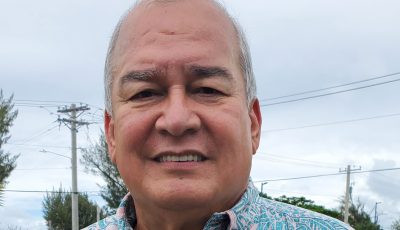Settlement Fund portfolio declining, depletion seen in 2019
Due to the required monthly drawdown from the investment accounts, it is now projected that the lifespan of the settlement fund will only be up to 2019, or five years from now.
Settlement trustee Joyce C. H. Tang disclosed this in her report to the court on Tuesday, indicating that this projection includes the assumption that zero income will be realized from investment portfolios and that the NMI government will continue to pay the annual payments.
As of Dec. 31, 2013, the remaining balance in the investment accounts was $104.8 million.
For fiscal year 2014, the amount required to cover pension payments and operating expenses of the Settlement Fund is approximately $51.6 million, Tang said. Assuming full timely payment of the $25 million annual payment from the government, less pension payments and operation expense, there will be a shortage of approximately $26.6 million.
Tang said the Settlement Fund continues to drawdown on the investment accounts every month to cover the pension payouts and operating expenses. Each year, drawdown is at $24 million to $27 million.
In her analysis, this fiscal year 2014 annual payment is projected at $25 million with anticipated annual shortfall of $28 million. The amount of declining investment account balance will be $85 million.
In fiscal year 2015, Tang said they are projecting $27 million in annual payments; $28 million in shortfall; and investment balance will be at $59 million.
In fiscal year 2016, with a forecast annual payment of $30 million and projected shortfall of $23 million, the investment account is projected to be just around $36 million.
In fiscal year 2017, the declining investment account is seen at $16 million (annual payment of $33 million and $20 million projected shortfall).
The investment account is seen to further go down to $8 million in fiscal year 2018 (anticipated annual payment is at $45 million versus projected shortfall of $8 million).
By fiscal year 2019, the investment account balance is seen at negative $1 million with the following projected figures: annual payment of $44 million and projected annual shortfall of $9 million.
According to Tang, given the sustained high rates of cash outflow, short expected life, and uncertainty whether the CNMI government will continue to meet its annual payment obligations, the Settlement Fund does not have the ability to take on much investment risk in the financial markets.
“Although a new asset allocation glidepath is being analyzed and considered, it is clear that the portfolio will still be predominantly fixed income base. This means that the expected return for the Settlement Fund will be significantly below an average pension plan’s expected return,” stated Tang in her filing, adding that the combination of continued high outflow of funds coupled with low returns seriously limits the options for earning investment income.
As of Dec. 31, 2013 the following are the investment balances: Blackrock ($3.138 million); JP Morgan ($959,000); Mutual Fund cash ($721,000); and PIMCO Richmond Capital ($100.059 million).
Contracts
Still based on Tang’s latest court filing, a contract is being proposed to retain the services of Wilshire Associates, which agreed to serve at a lesser fee. It was disclosed that from the RFPs issued by the Settlement Fund, Wilshire is the only firm that submitted a proposal that met the requirements of the RFP. It is asking for a basic fee of $145,000, which is $20,000 less than what it charged the Fund in 2013.
Because the Settlement Fund also requires a software program that is able to calculate the benefits and audit members’ accounts, a contract was proposed to the tune of $150,000.
Tang said the software program is tailored to meet the requirements of the Settlement Fund and will be operational late next month. The $150,000 cost, she said, is substantially less than the $400,00 paid by the Fund previously to a company and the $250,000 quoted by Buck Consultants for the same service.



























